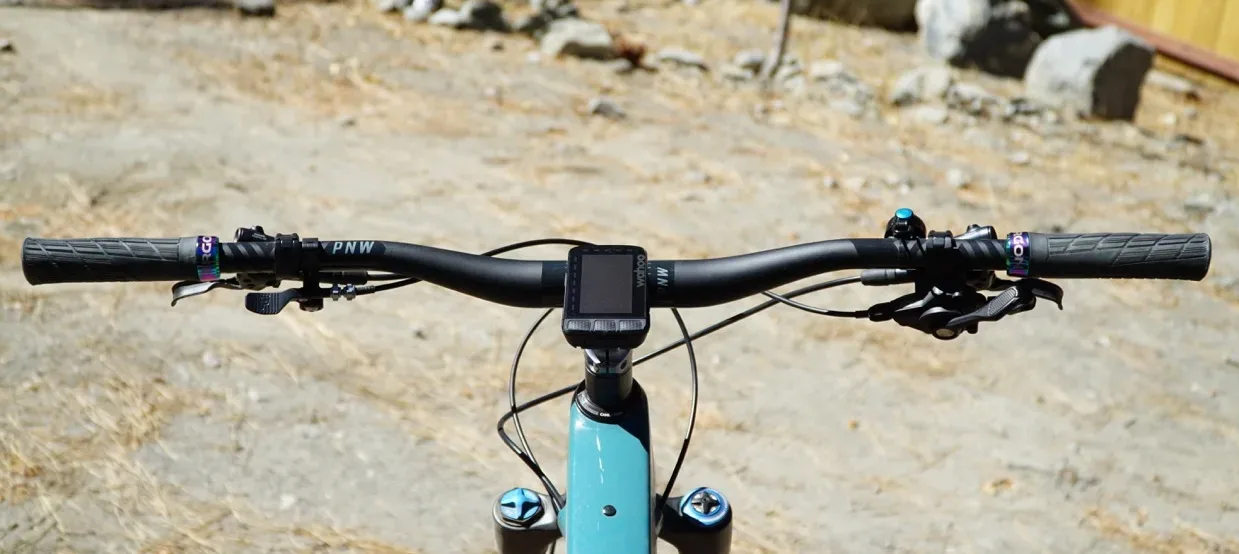As you probably figured, I like to ride all kinds of bicycles – as many as I can get my hands on. While riding all of these wonderful bikes, I’ve also ridden a lot of different types of handlebars. I have a mental list of favorite handlebars, and the PNW Components Carbon LOAM Bar just made it to the top.
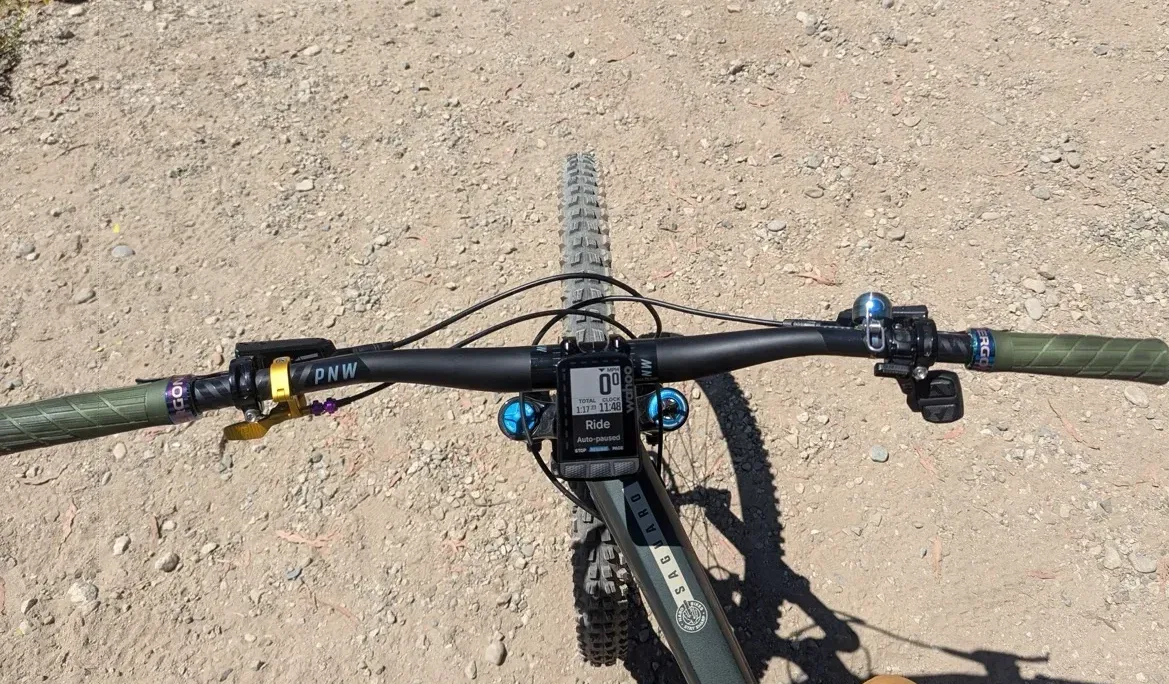
I have a pretty wide variety of handlebars on that “favorites” list. For example, an old (’97?) Titec titanium flat bar, Jones H-Bar, Velo Orange’s Nouveau Randonneur Handlebar, two Tumbleweed Bicycles bars, the Prospector chromoly bar, and the Big Dipper Drop Bar.
I have two of the LOAM Bars on two different bikes. The Haro Saguaro 1 which is an aggressive “All-mountain” hardtail, and my personal Salsa Blackthorn which is a full suspension “all-mountain” bike. In both cases, the LOAM Carbon Bars replaced the aluminum RaceFace Turbine R handlebars.
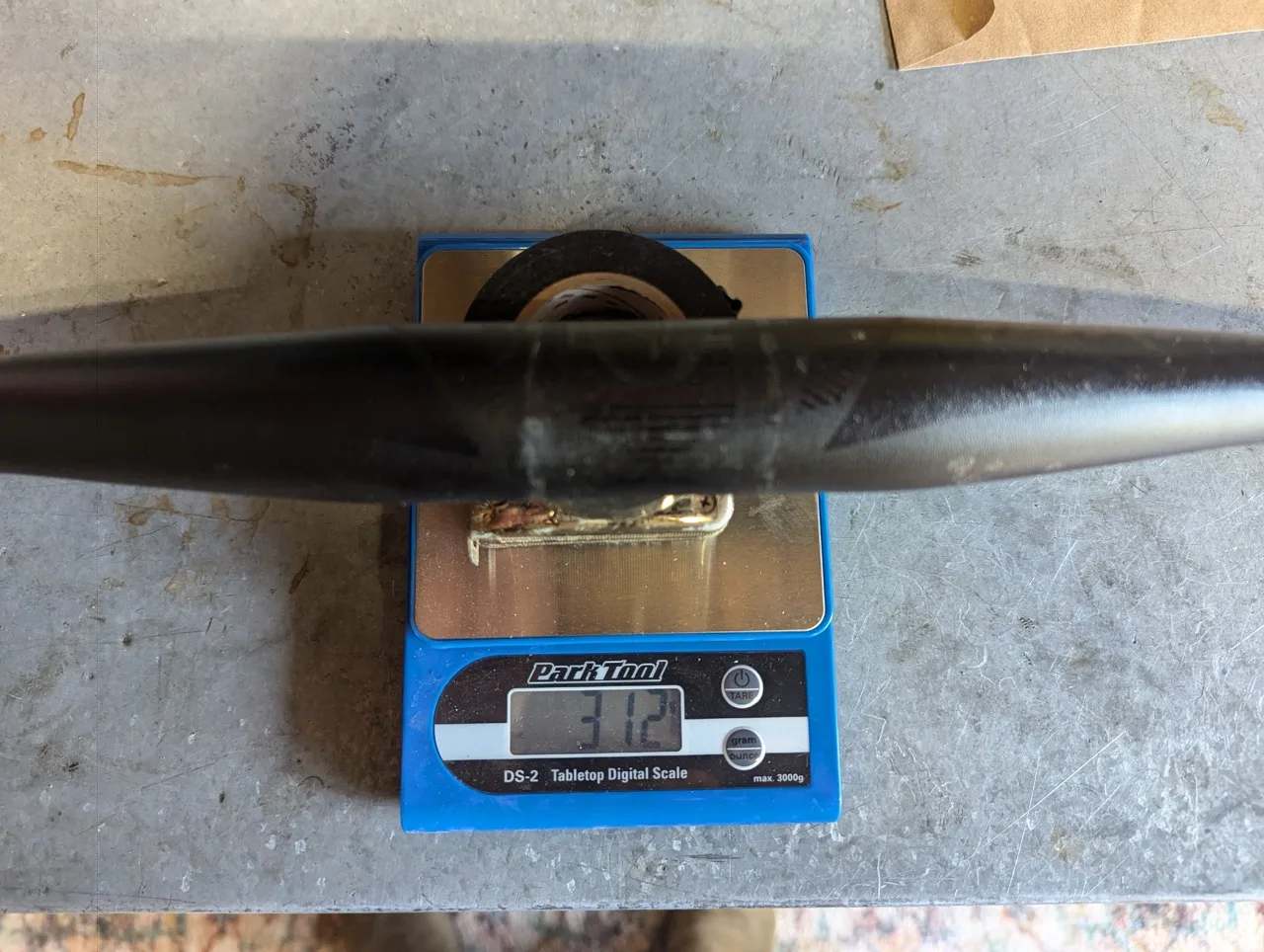
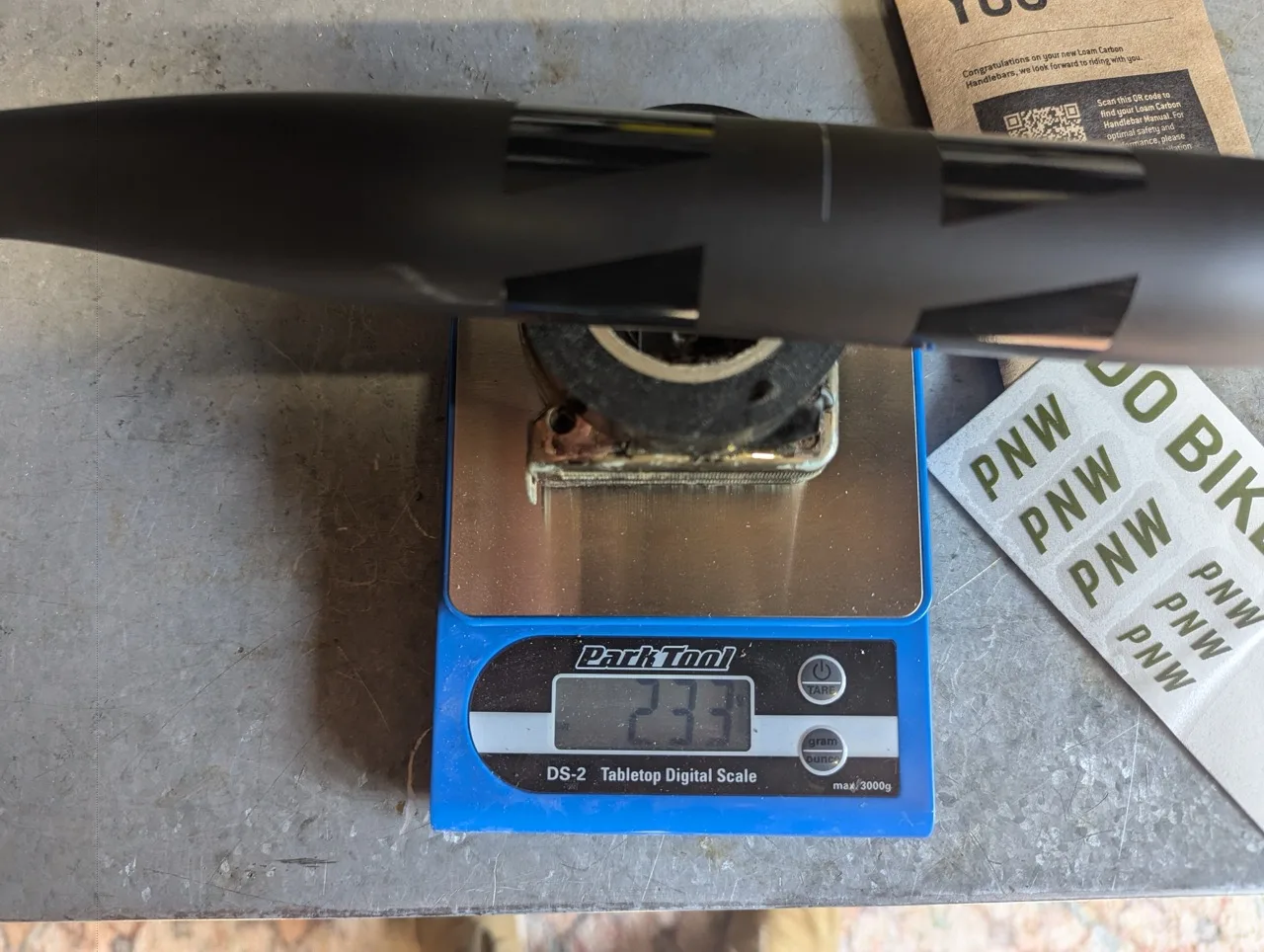
The LOAM Bar has a different geometry than the Race Face Turbine R. And, as you might expect, it’s also lighter. In the picture above, you can see the difference in the weight between the two bars.
It’s How LOAM Bars Are Built…
PNW Components uses a “patent-pending, proprietary CBD layup process” when constructing the bar. They say it brings “unparalleled chatter-absorbing comfort” while “paired with an ideal amount of horizontal stiffness”. I say that the ride quality of the LOAM Bar is comfortable and predictable.
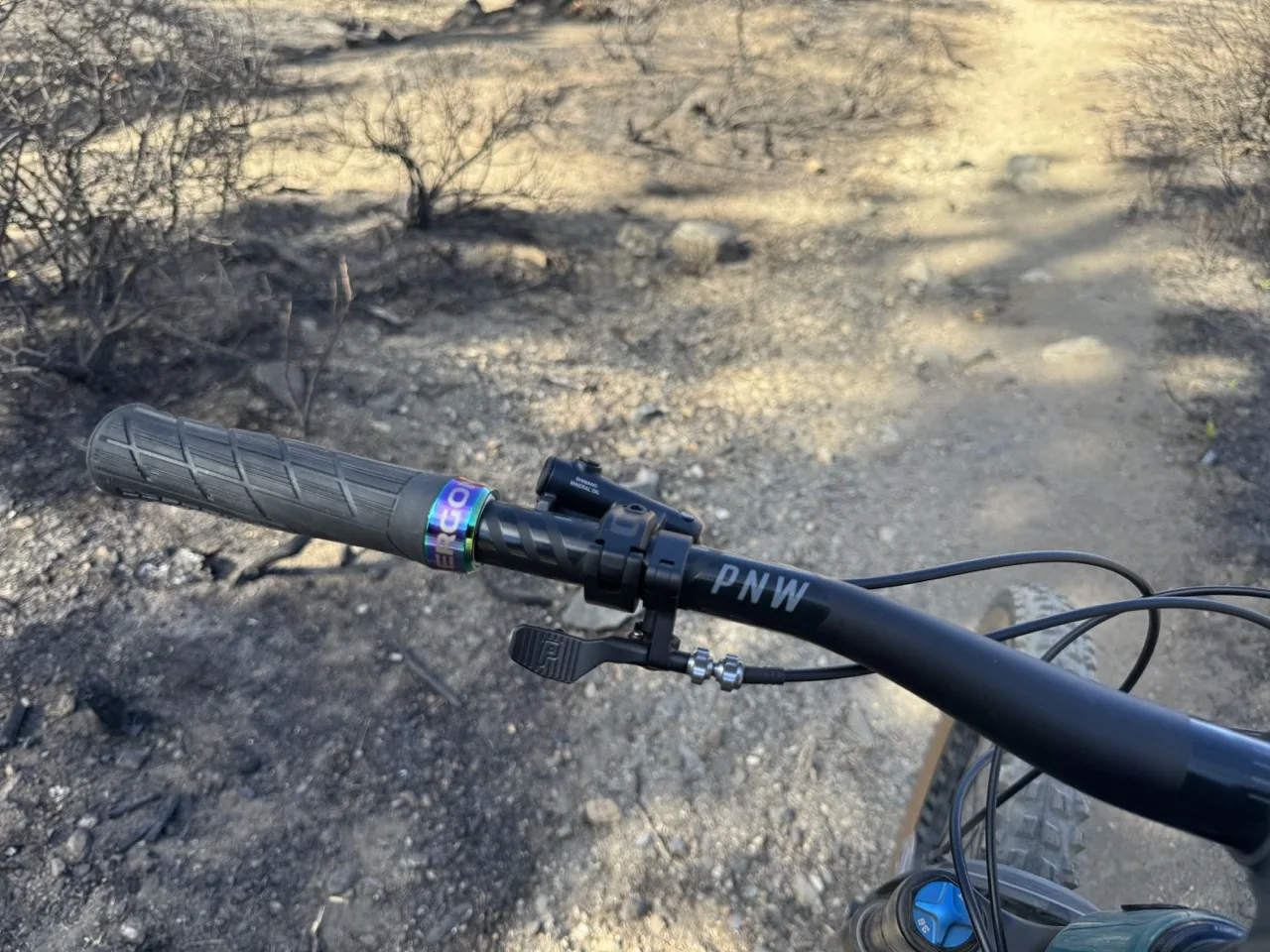
The LOAM Bar is said to be made by using the highest quality pre-preg UD carbon on the market. Blend the construction of the bar with PNW’s anti-fatigue geometry, and you have a bar that delivers the comfort and smooth handling that is promised.
The LOAM Bar has been extensively tested and rated strong enough for eBikes, and DH. Like all PNW products, the LOAM Bar comes with a Lifetime Warranty.
LOAM Bar Install
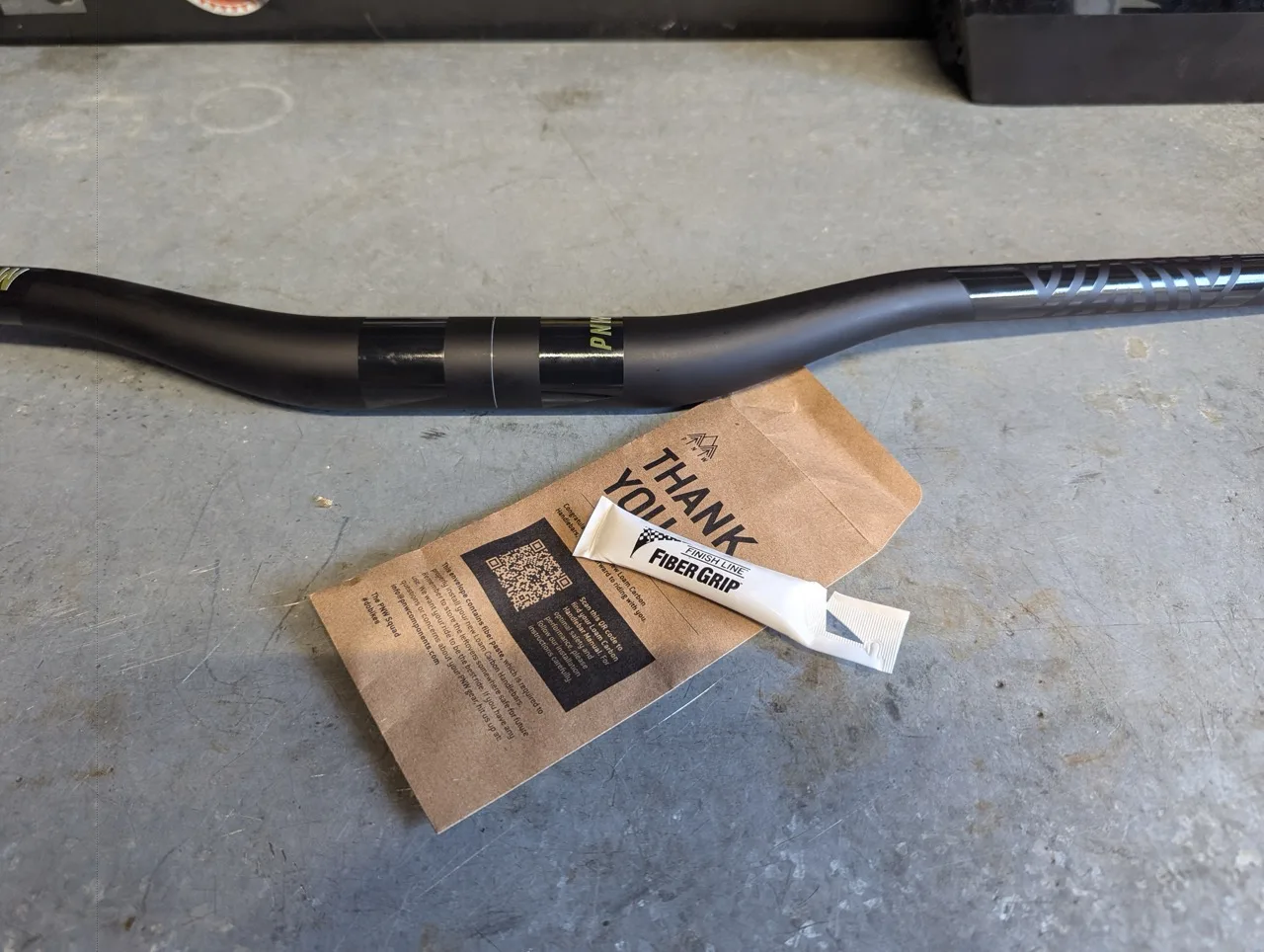
PNW recommends using a torque wrench when installing the LOAM Bar, which I did (and you should always do for any carbon component). PNW also conveniently provides a small tube of Finish Line Fiber Grip carbon assembly paste. They recommend you follow the paste’s instructions during assembly.
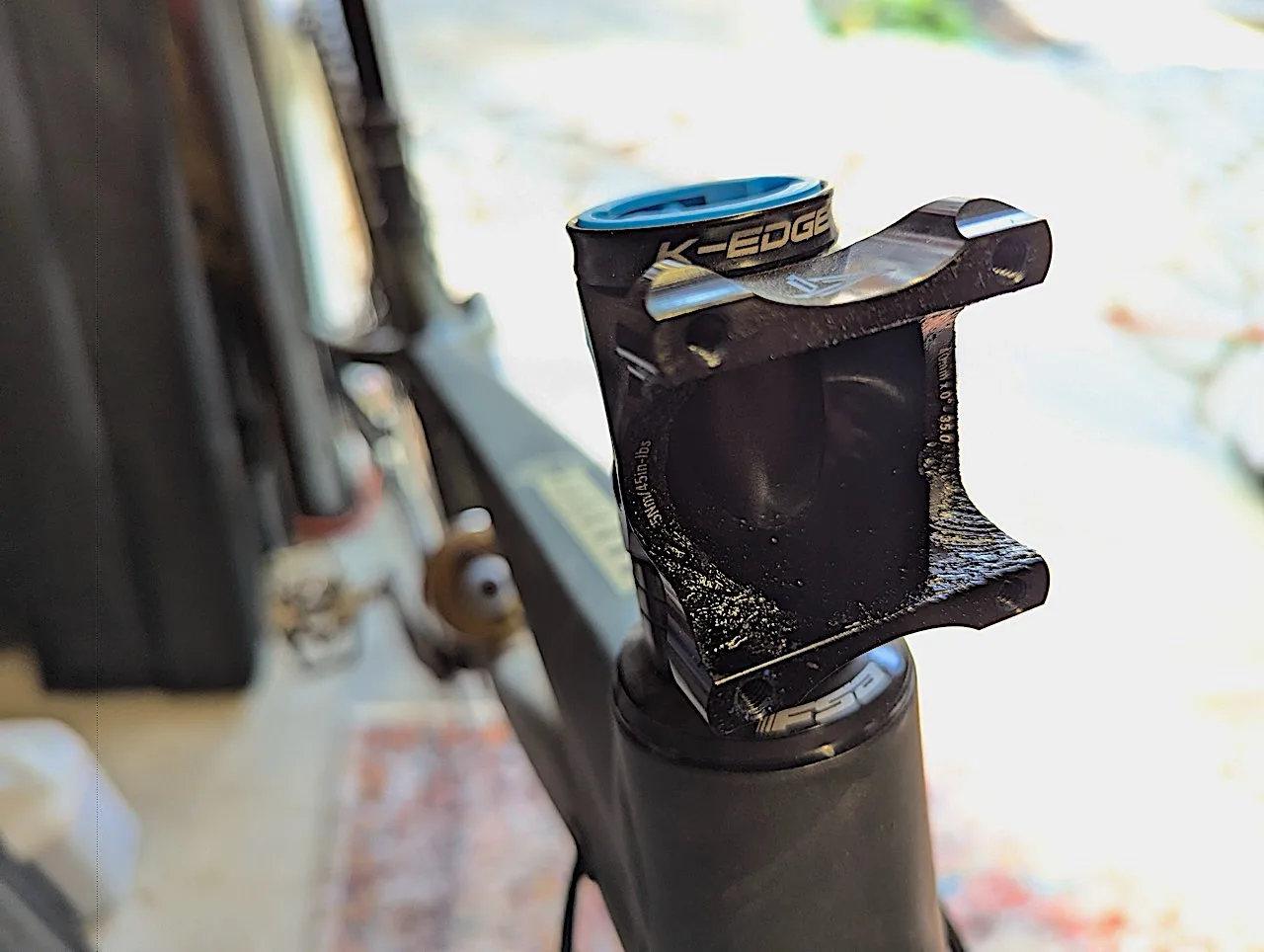
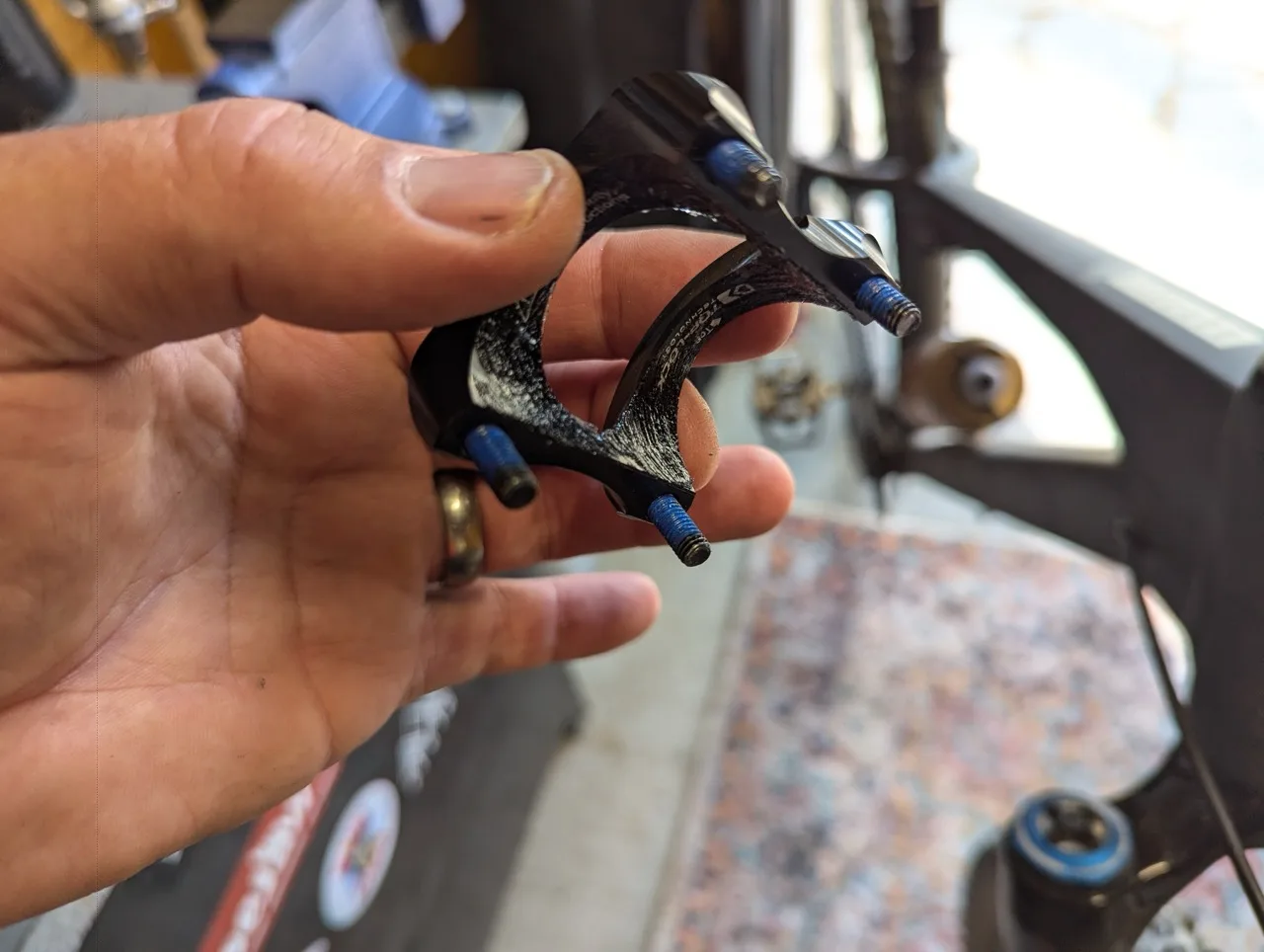
I added the paste to the stem, wherever it is touching the carbon LOAM Bar. I moved and adjusted the position of the bar in the stem, and tightened the face plate using the required amount of torque spec. There were alignment graphics on the bar which made centering and adjustment very easy to do.
When ordering the LOAM Bar, you have the choice of 10 different decal colors to get matchy-matchy on your steed. I ordered mine with the Moss Green but had a difficult time applying them. Once they were applied, I didn’t totally care for the looks of the decals. I mean, I didn’t install them very well, so your results may vary.
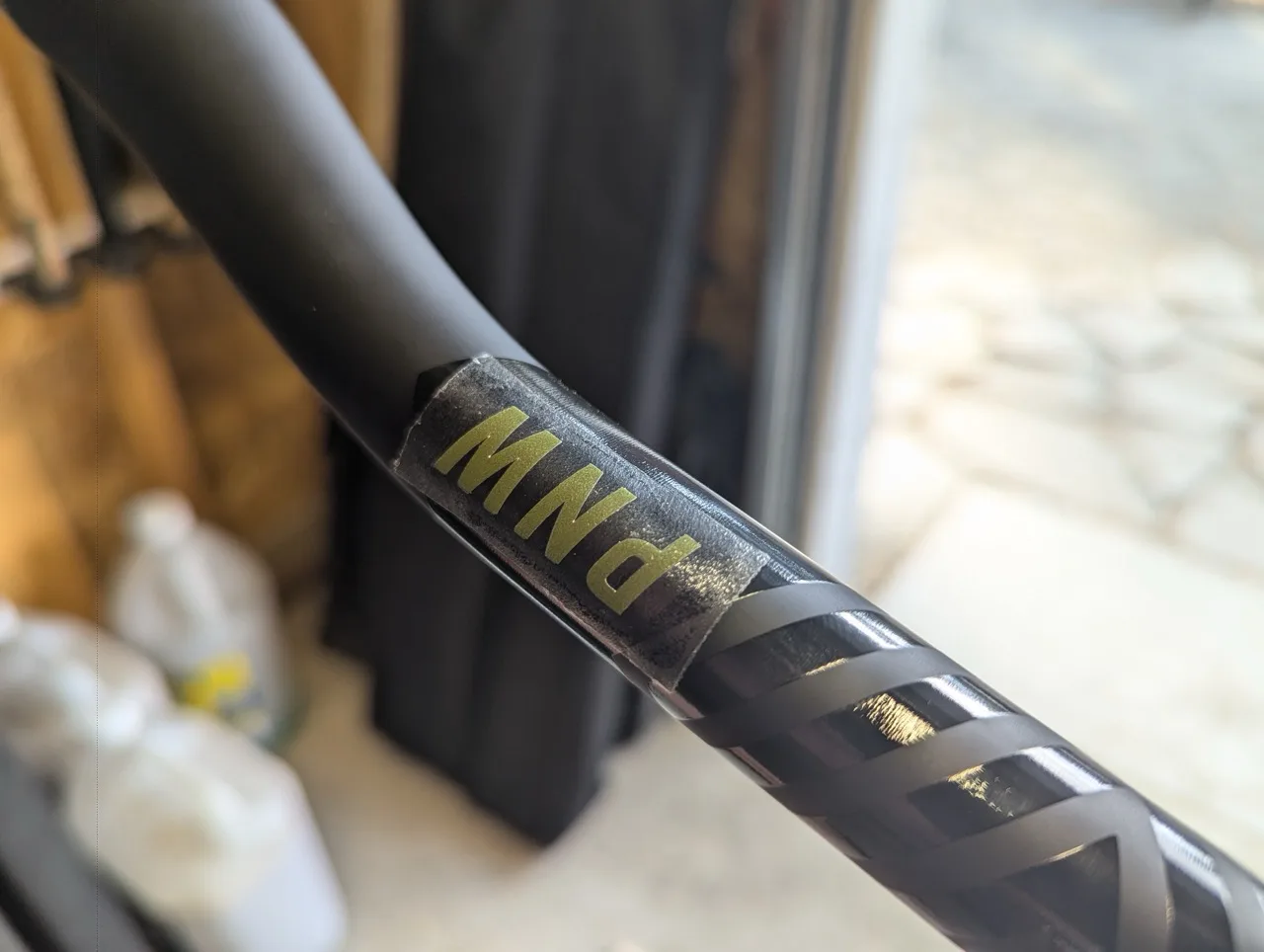
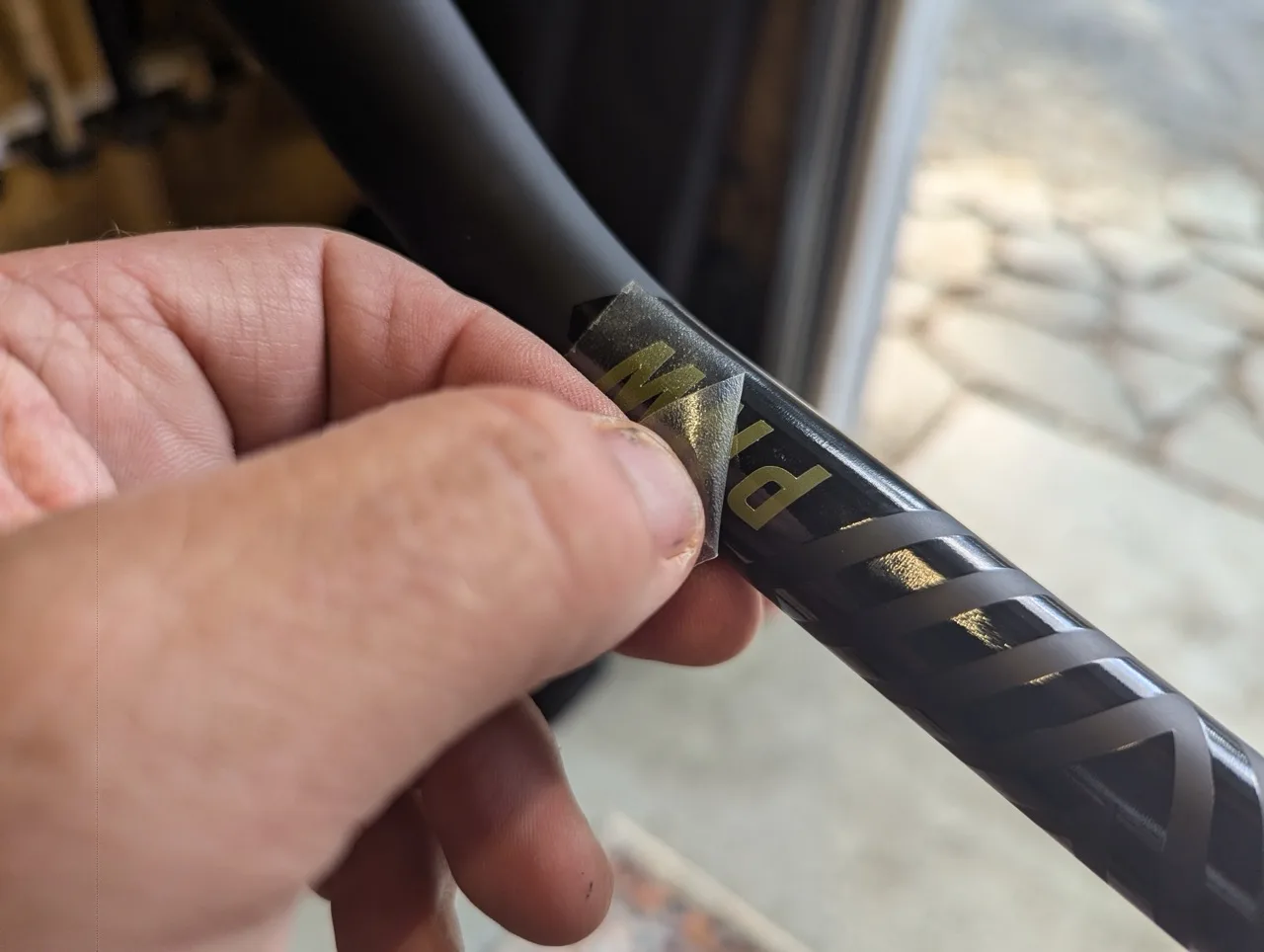
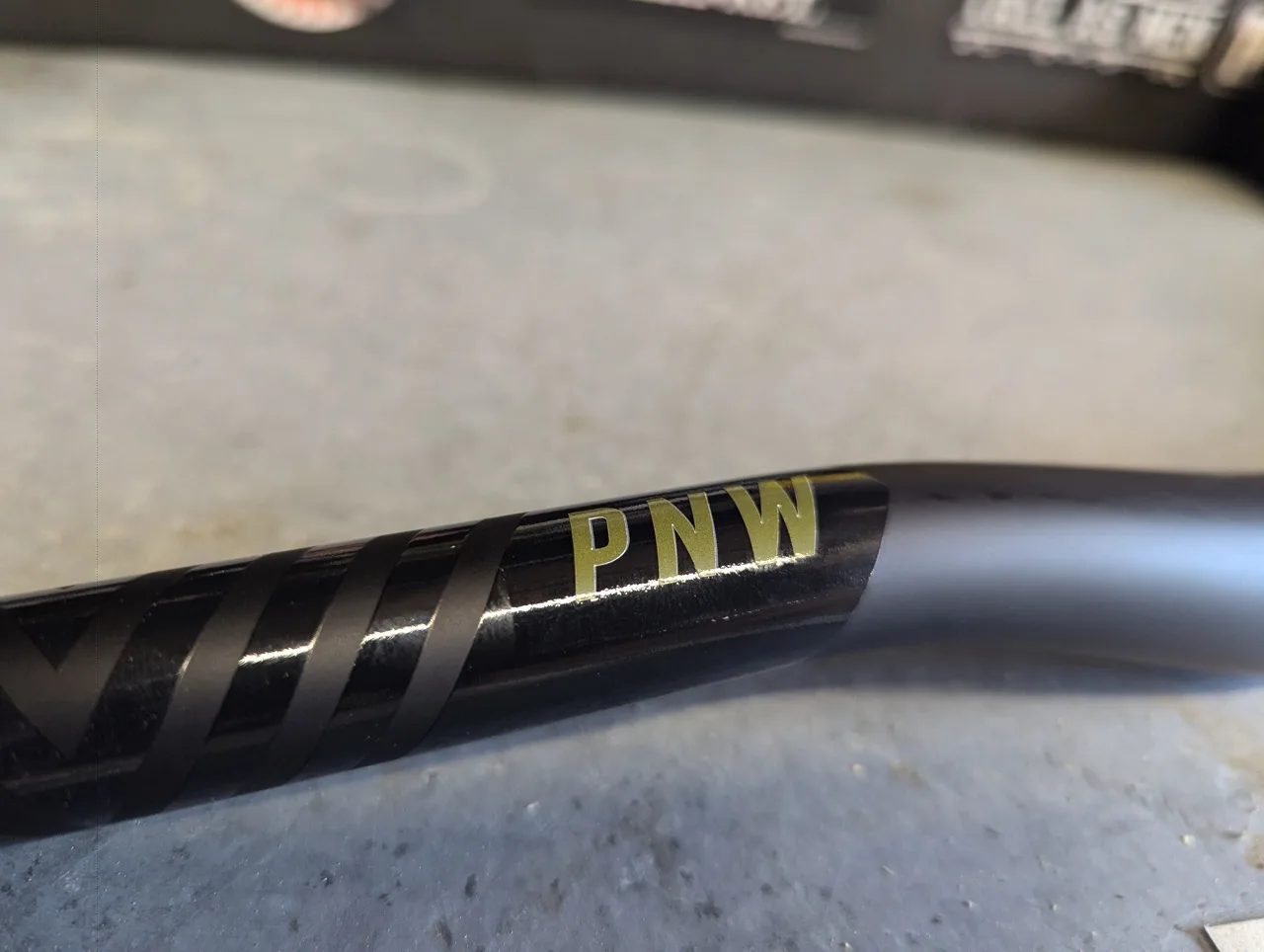
Anywho, I opted to remove the decals and run the bar in the handsome low-key Cement Grey branding that it comes with.
How Does the LOAM Bar Feel?
So far, the bar does feel a little different between the two bikes. This could be due to many factors. Geometry, headtube angle, amount of front travel, the front end’s lateral stiffness, and riding position all play into the equation.
I feel the effects of the bar a little more on the Haro. The Saguaro 1 is a 140mm travel hardtail, and the LOAM Bar was a game-changer on this bike.
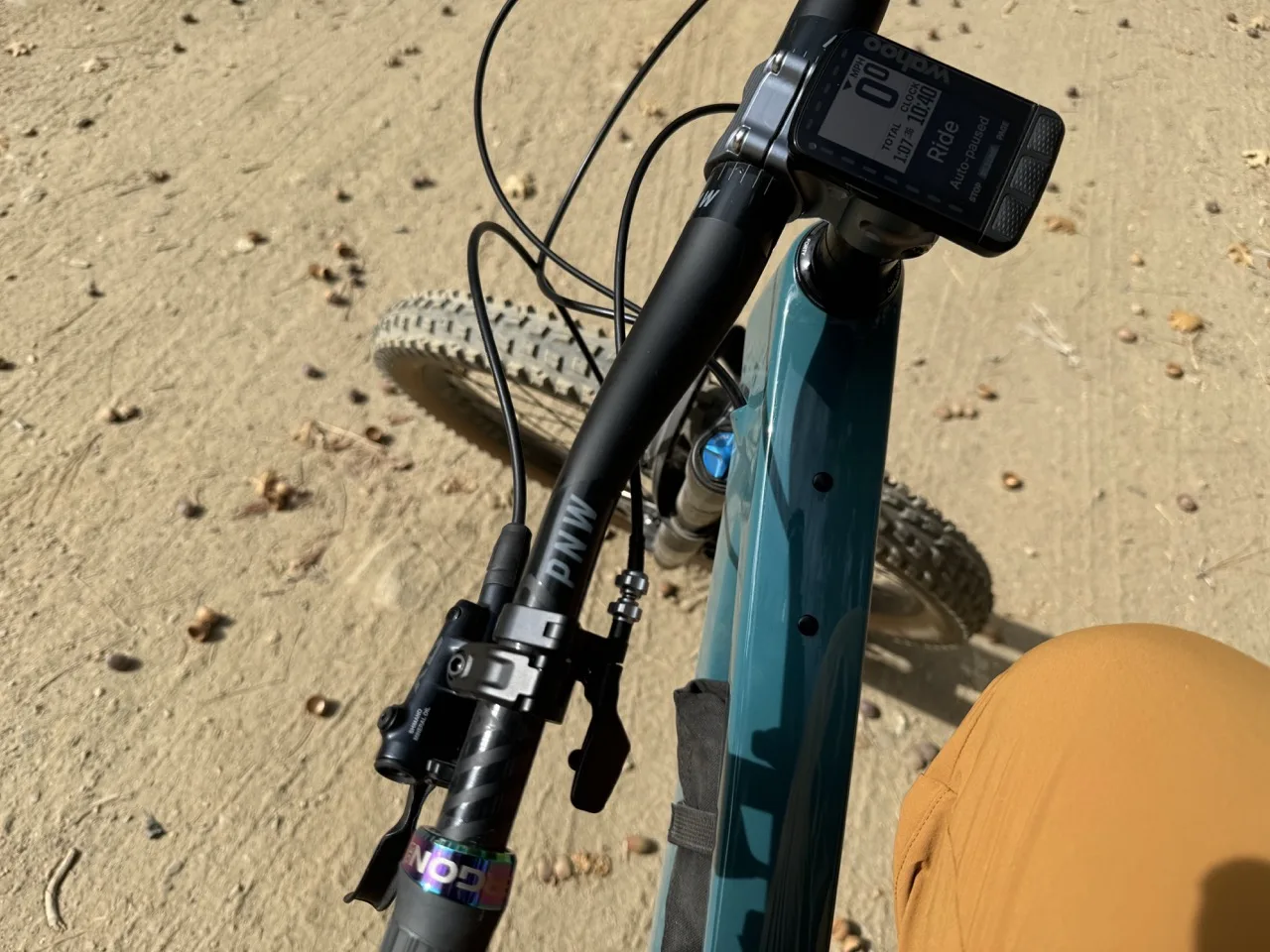
It is so noticeable that the bar has a vertical compliance that smooths out all of the trail’s small frequency bumps. On the very first ride with the LOAM Bar, I quickly noticed the bar’s geometry relieved the wrist fatigue that I was experiencing with the Race Face bars. The difference isn’t much – just 2º of backsweep from the 8º Race Face to the 10º PNW. But I found that small increase in backsweep more comfortable.
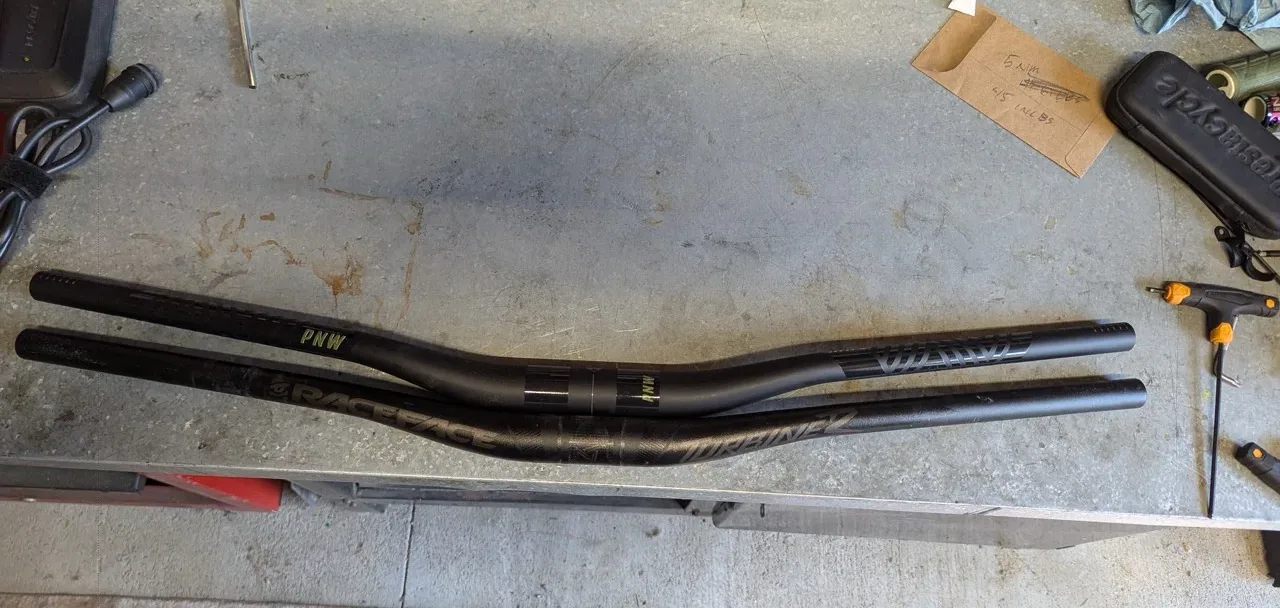
In back-to-back testing, the LOAM bar seemed to offer the same level of control as the aluminum Race Face bar. Cornering was precise with zero perceptible flex from the LOAM Bar, with sharp and focused steering.
PNW LOAM Bar Specs and Retail
Retail: $159
- Patent Pending CBD Layup
- Premium pre-preg UD Carbon
- Rated strong enough for e-bikes and DH riding
- Upsweep: 5° Backsweep: 10°
- Width: 800mm (tested) (740mm minimum trim width)
- Clamp size: 31.8 and 35mm (tested)
- Rise: 25mm (tested) and 38mm
- Max stem width: 70mm
- Max stem torque: 8nm
- Max lever clamp torque: 6nm
- Max rider weight: 268lbs (130kg)
In Conclusion
PNW makes high-quality parts that won’t break the bank. And they offer excellent customer service. Supporting PNW is easy to do.
All in all, this bar has far exceeded my expectations. I was looking for a bar that would be more comfortable on my wrists, offered a tiny bit more rise and back sweep, and smoothed out the small stutter bumps that I frequently ride on. This bar tackled the challenge with ease. Plus, it looks great too.
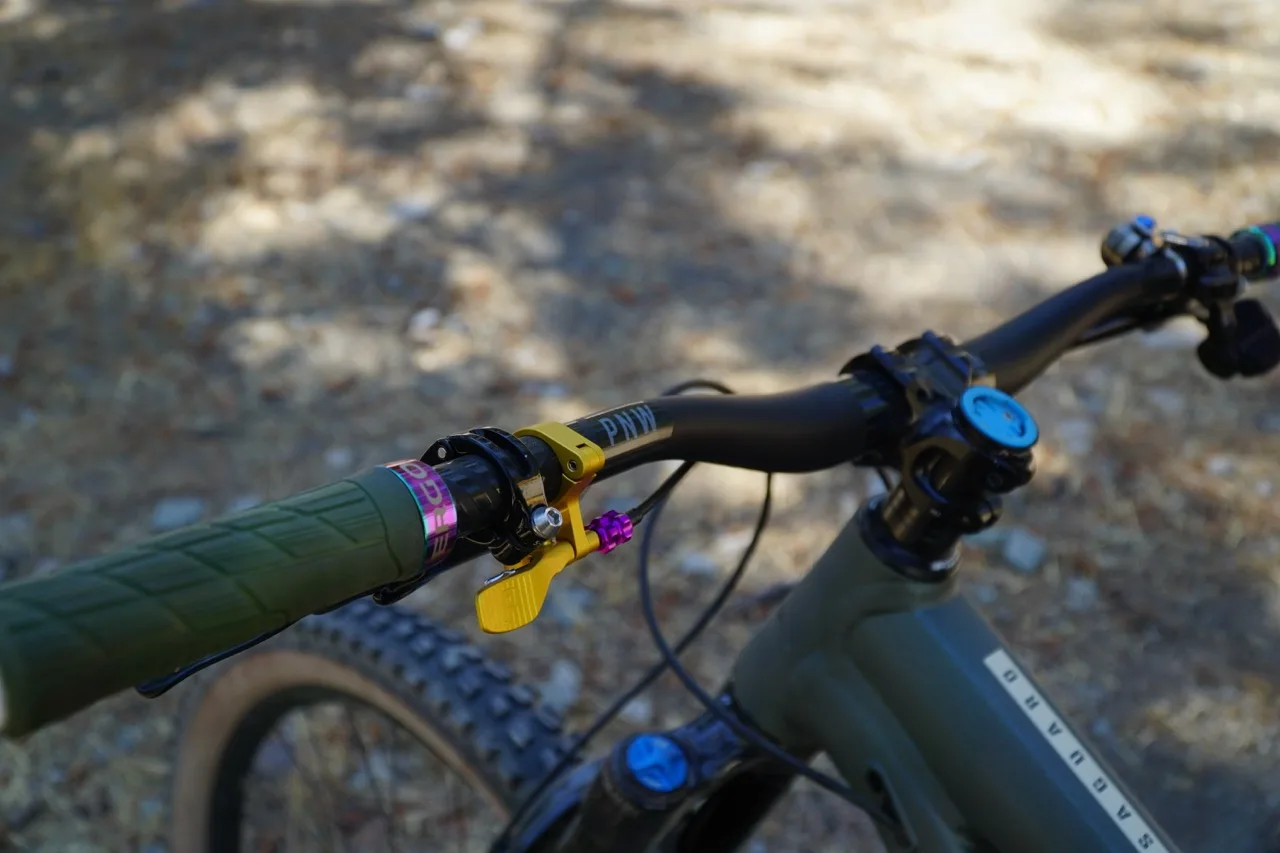
The LOAM Bar is competitively priced and affordable for a carbon bar of this quality.
I would strongly suggest this bar to anyone in the market for a wide MTB carbon riser bar.
Check out the other quality bikey bits that PNW has to offer by hitting the link below.
